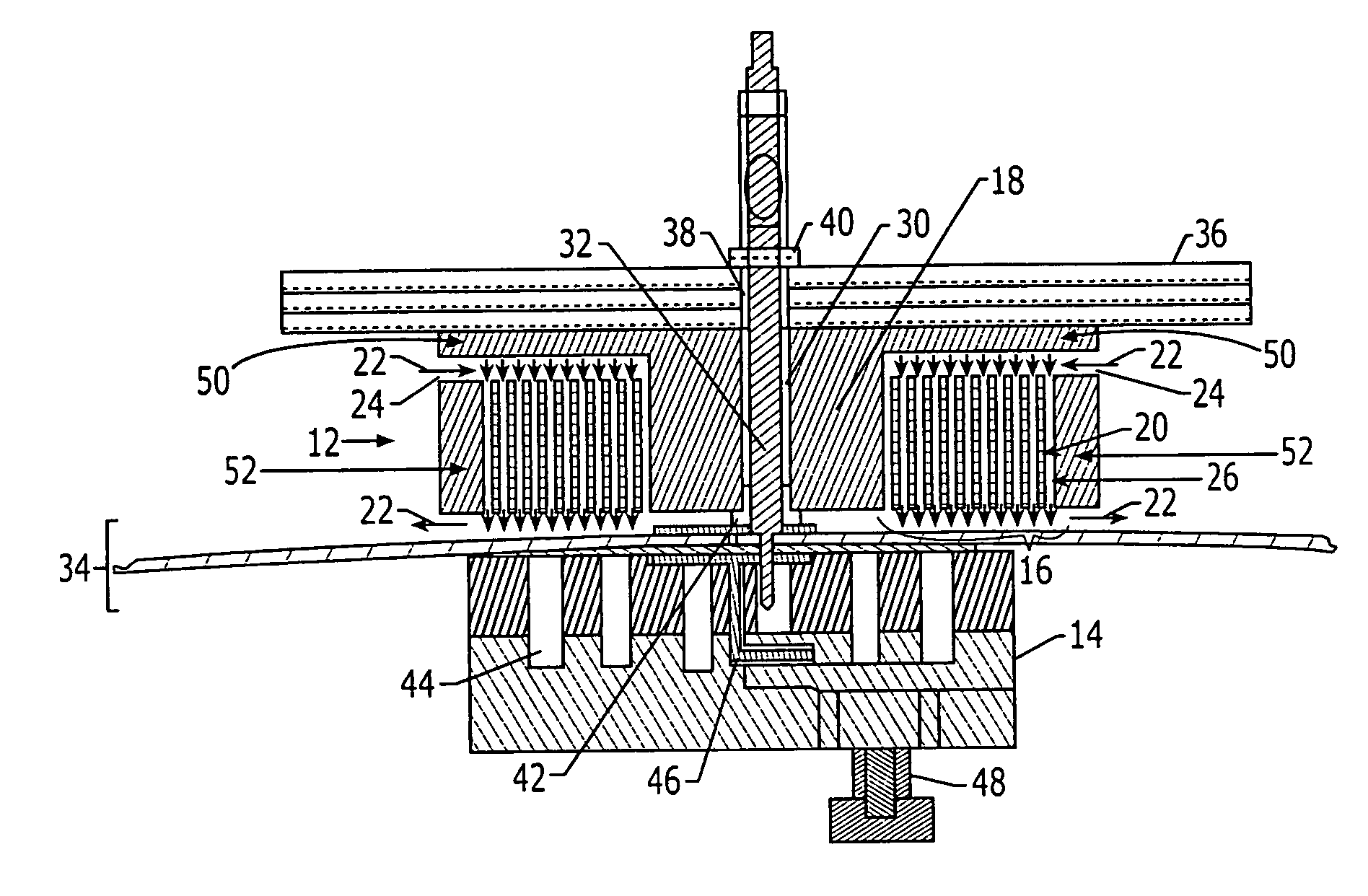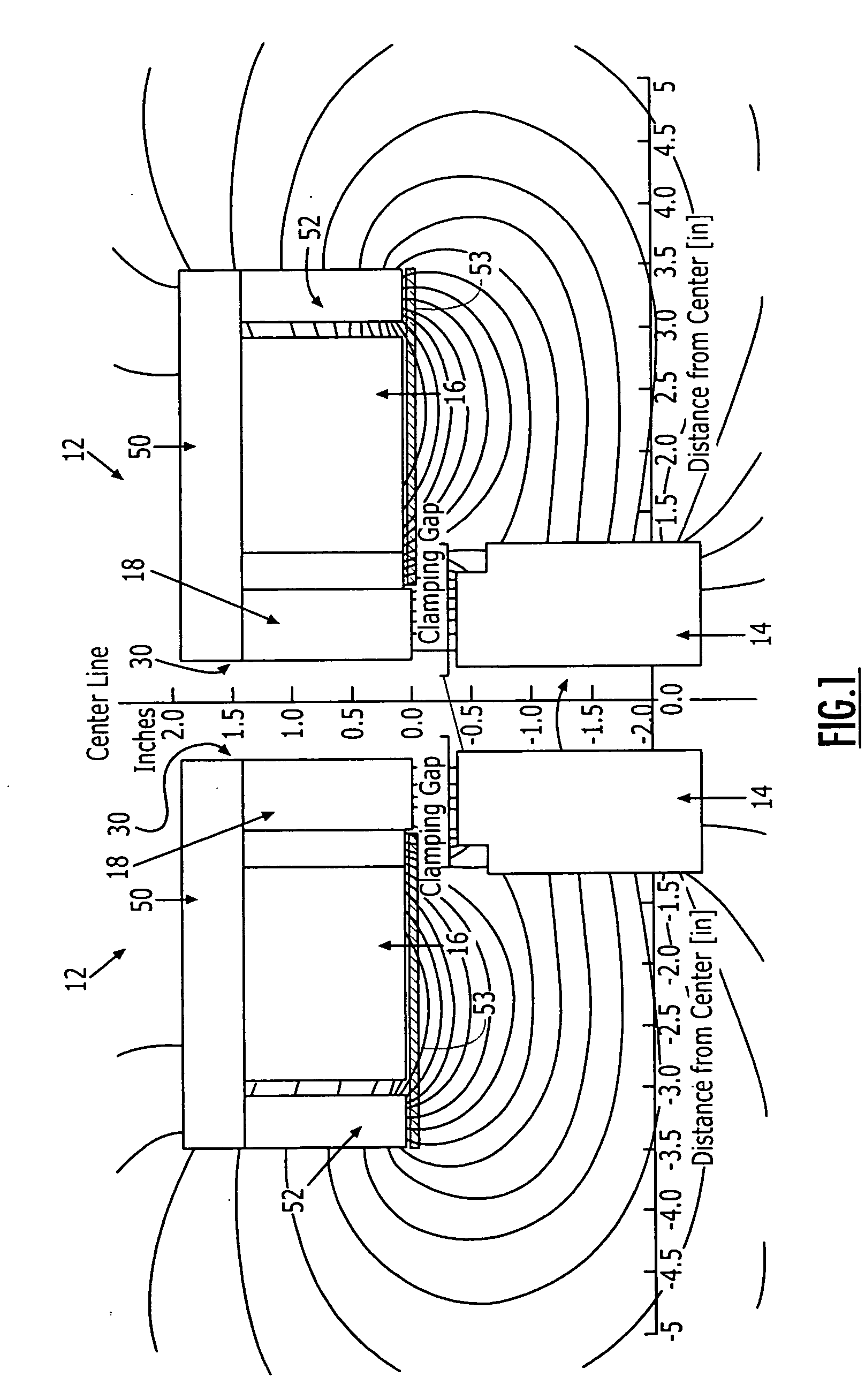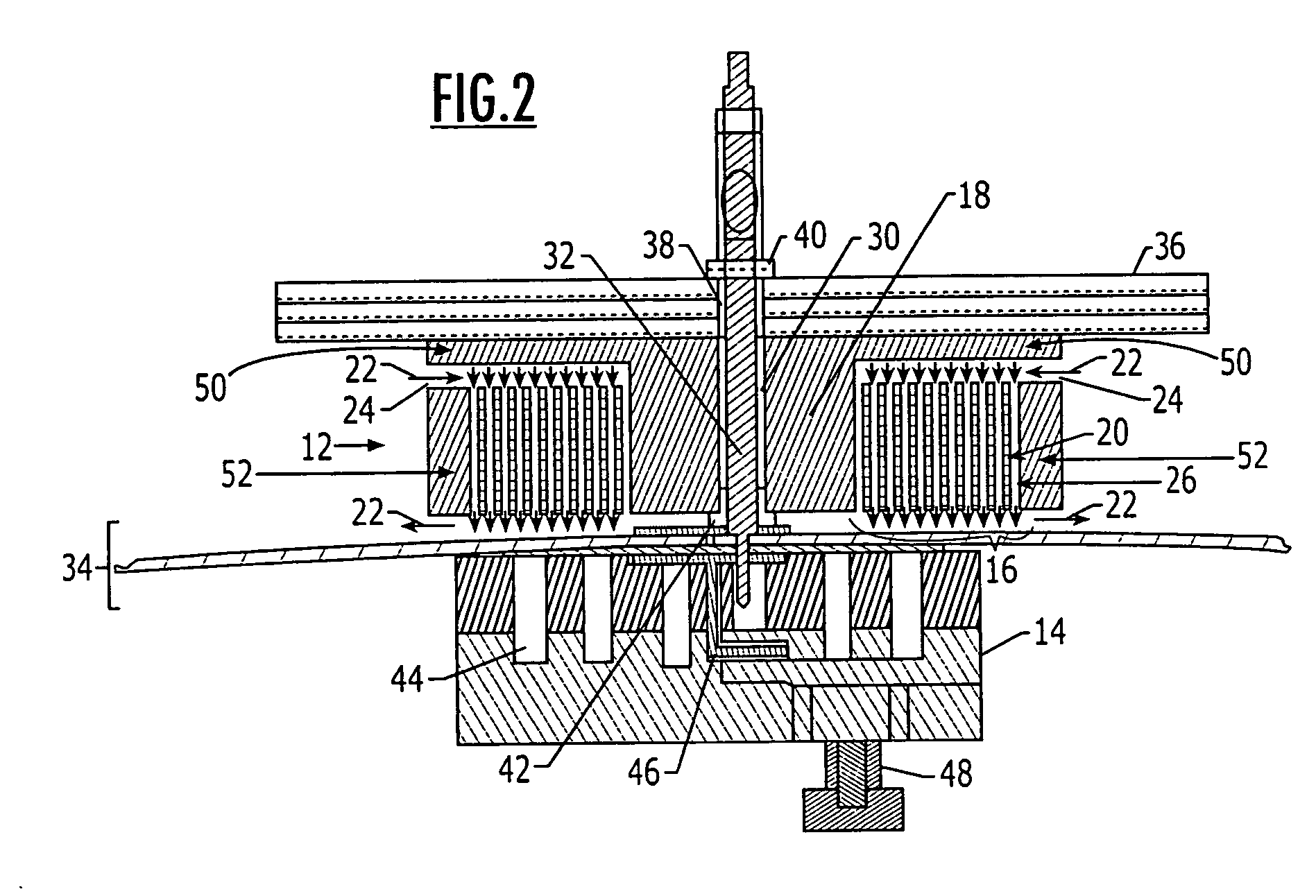Method for fabricating an electromagnet
a technology of electromagnets and electromagnets, which is applied in the direction of magnets, manufacturing tools, magnetic bodies, etc., can solve the problems of significant time and labor expenditure, ineffective structure for intended purposes, and subject to the expense of repair or replacement, so as to reduce the cost and time involved, and the effect of being convenient to us
- Summary
- Abstract
- Description
- Claims
- Application Information
AI Technical Summary
Benefits of technology
Problems solved by technology
Method used
Image
Examples
Embodiment Construction
[0024] The present inventions now will be described more fully hereinafter with reference to the accompanying drawings, in which some, but not all embodiments of the invention are shown. Indeed, these inventions may be embodied in many different forms and should not be construed as limited to the embodiments set forth herein; rather, these embodiments are provided so that this disclosure will satisfy applicable legal requirements. Like numbers refer to like elements throughout.
[0025] The electromagnetic clamp and method for clamping a structure of the present invention provide techniques for securely clamping structures, such as multiple layer structures, to prevent the layers of the structure from separating during an operation, while other aspects of the present invention provide a method for fabricating an electromagnet capable of creating the force necessary to securely clamp the structure. Due to the configuration of the core and coil of the electromagnet, it is capable of coo...
PUM
| Property | Measurement | Unit |
|---|---|---|
| thick | aaaaa | aaaaa |
| electric current | aaaaa | aaaaa |
| internal magnetic field | aaaaa | aaaaa |
Abstract
Description
Claims
Application Information
 Login to View More
Login to View More - R&D
- Intellectual Property
- Life Sciences
- Materials
- Tech Scout
- Unparalleled Data Quality
- Higher Quality Content
- 60% Fewer Hallucinations
Browse by: Latest US Patents, China's latest patents, Technical Efficacy Thesaurus, Application Domain, Technology Topic, Popular Technical Reports.
© 2025 PatSnap. All rights reserved.Legal|Privacy policy|Modern Slavery Act Transparency Statement|Sitemap|About US| Contact US: help@patsnap.com



